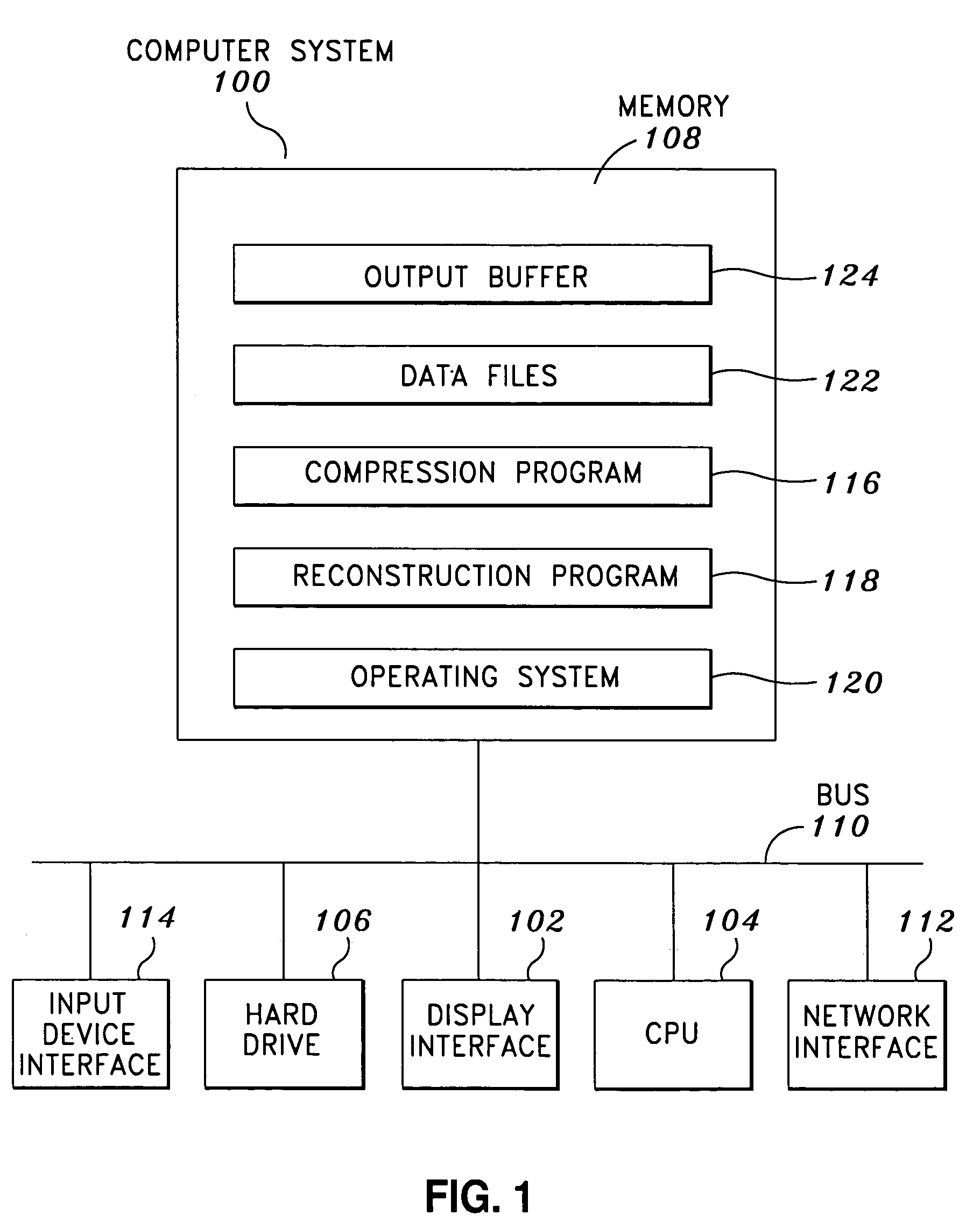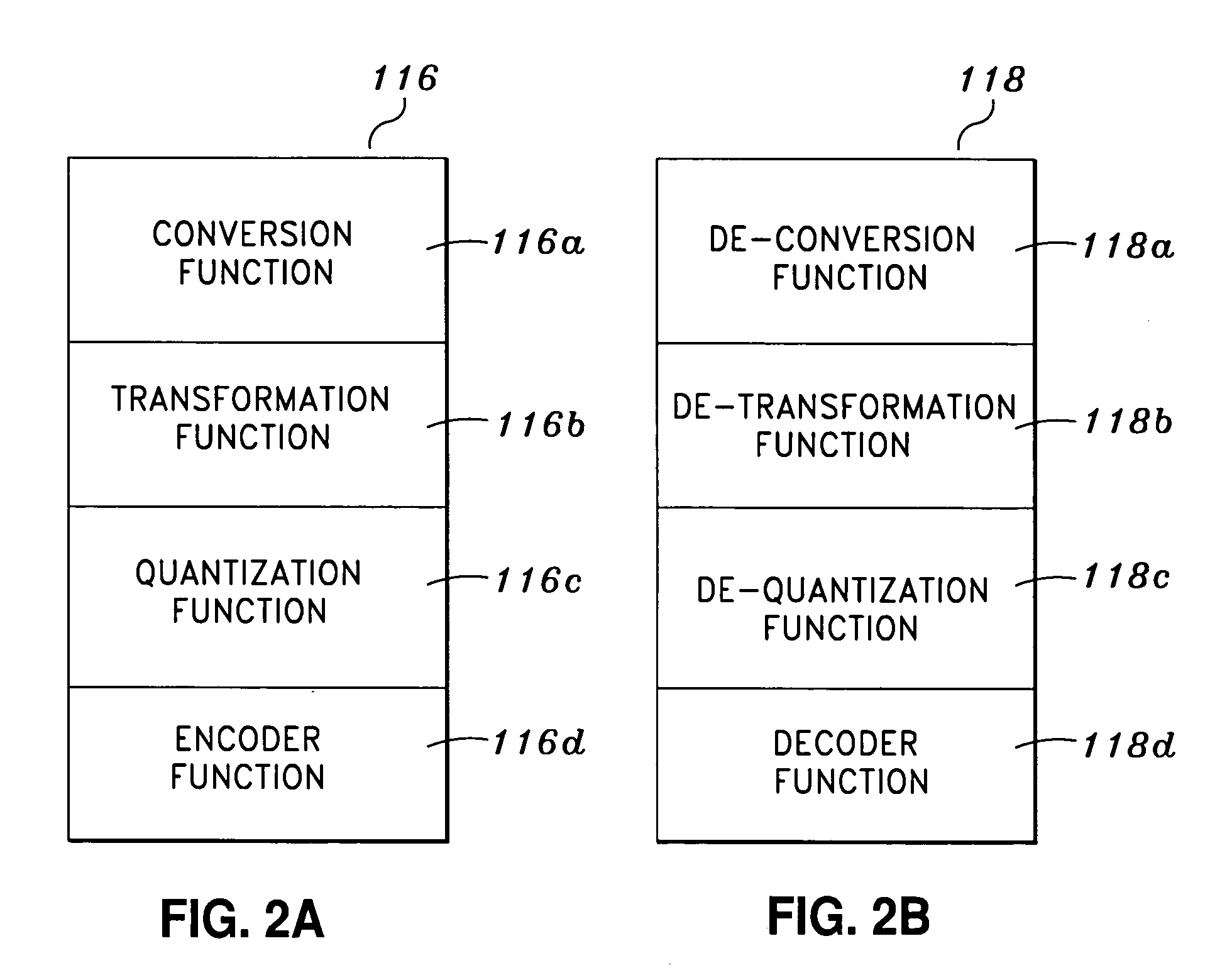Wavelet-based data compression using principal components transformation
- Summary
- Abstract
- Description
- Claims
- Application Information
AI Technical Summary
Benefits of technology
Problems solved by technology
Method used
Image
Examples
Embodiment Construction
[0046]The present invention is now described more fully hereinafter with reference to the accompanying drawings that show preferred embodiments of the invention. This invention, however, may be embodied in many different forms and should not be construed as limited to the embodiments set forth herein. Appropriately, these embodiments are provided so that this disclosure will be thorough and complete, and will fully convey the scope of the invention. As will be appreciated by one having skill in the art, the present invention may be embodied as a method, data processing system, or computer program product. Accordingly, the present invention combines software and hardware to produce the embodiments described in further detail below. Furthermore, the present invention may take the form of a computer program product on a computer-readable storage medium having computer-readable program code means embodied in the medium. Any suitable computer-readable medium may be utilized including har...
PUM
 Login to View More
Login to View More Abstract
Description
Claims
Application Information
 Login to View More
Login to View More - R&D
- Intellectual Property
- Life Sciences
- Materials
- Tech Scout
- Unparalleled Data Quality
- Higher Quality Content
- 60% Fewer Hallucinations
Browse by: Latest US Patents, China's latest patents, Technical Efficacy Thesaurus, Application Domain, Technology Topic, Popular Technical Reports.
© 2025 PatSnap. All rights reserved.Legal|Privacy policy|Modern Slavery Act Transparency Statement|Sitemap|About US| Contact US: help@patsnap.com



